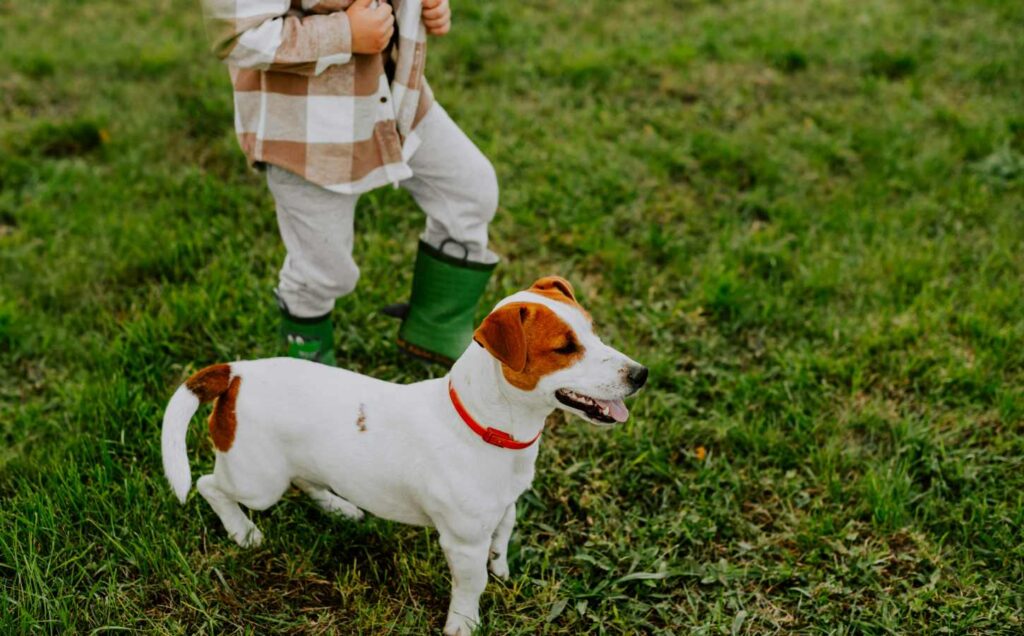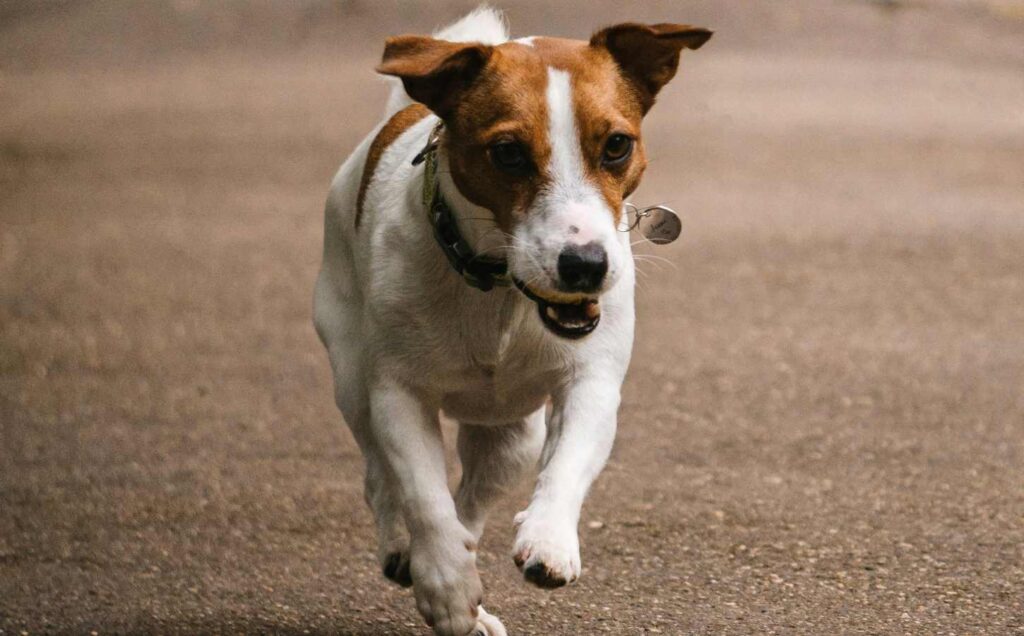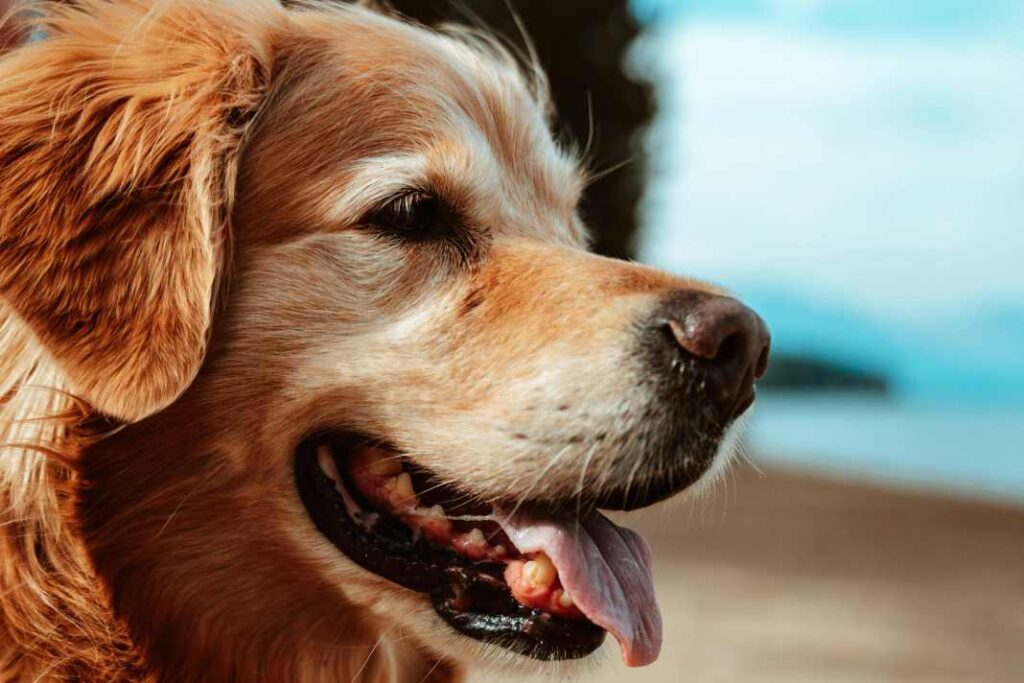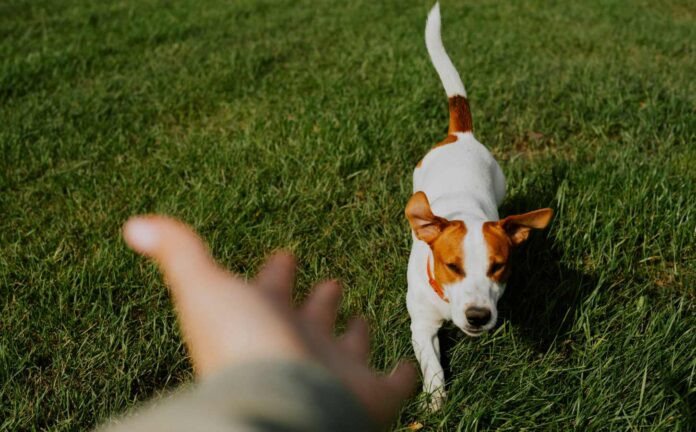Many dog owners find it stressful and challenging when their dog won’t go outside alone. If you have a dog that seems scared or hesitant to venture outside alone, this article will help. This behavior can stem from a variety of psychological reasons, including fear, anxiety, and past negative associations with being outdoors without human companionship.
This article covers:
- Understanding why your dog won’t go outside alone by exploring the psychological reasons behind a dog’s hesitation or refusal to go outside alone
- Addressing the common fears and anxieties that dogs experience
- Training tips and strategies to help your dog overcome its fear and enjoy being outdoors.
Introduction to Understanding Why Your Dog Won’t Go Outside Alone
Dogs are inherently social creatures, and their bond with their humans plays a significant role in their comfort and confidence levels in different environments.
However, even if you have a strong bond, there are reasons why your dog might still be afraid to go outside alone. Recognizing and addressing the reasons with patience, understanding, and positive reinforcement techniques is crucial for helping your dog overcome its reluctance to go outside alone.
To truly understand the root causes of your dog’s hesitation requires observing its behavior and considering any past experiences that may have shaped its current reactions. For example, a dog may have had an unpleasant encounter with another animal or been frightened by loud noises. If you address their fear issues, this can gradually help your dog feel safe and comfortable venturing outside on its own.
Understanding Your Dog’s Fear of Going Outside Alone
The signs of fear or discomfort in your dog will usually be quite evident through their body language. The dog might tremble, cower, or exhibit excessive panting when faced with the prospect of going outside alone. Behavioral changes, such as a sudden reluctance to approach the door or leash, can also indicate a dog’s underlying anxiety about venturing outside. Also notice whether your dog is only fearful about going outside on its own, or still shows fear even when you are with it.
Separation anxiety can have a significant role in a dog’s fear of being outside by themselves. This form of anxiety is characterized by distress and behavior problems that occur when a dog is separated from its owner. Recognizing these signs early and understanding their implications is essential for developing a strategy to help your dog overcome its fears.

Common Reasons Behind a Dog’s Reluctance to Go Outside Alone
Several factors can contribute to a dog’s reluctance or refusal to go outside. The following are some of the most common reasons:
- Noise sensitivity, where loud sounds like thunderstorms, fireworks, or heavy traffic can cause significant distress to a dog
- A negative outdoor experience, such as encounters with aggressive animals or extreme weather conditions, can make a dog hesitant to venture outside again without the reassurance of their owner
- For dogs adopted or rescued later in life, clingy behavior may stem from their previous experiences or lack of early socialization. Such dogs often require extra reassurance and support when learning to navigate the world outside the safety of their home.
Understanding the factors that can drive a dog’s reluctance is the first step to helping when your dog won’t go outside alone.
Training Tips and Strategies to Help Your Dog Overcome Fear
There are two main ways to help your dog overcome its fear of going outside. They are:
- Desensitizing techniques
- Reward-based training methods
Desensitization techniques can be highly effective in helping your dog become more comfortable with the outdoors. This process involves gradually exposing your dog to the stimuli that trigger fear, such as noises or unfamiliar environments, and pairing these experiences with positive reinforcement.
Encouraging positive outdoor interactions through play, socialization with other dogs, and exploration can significantly boost a dog’s confidence.
Reward-based training methods, like clicker training or offering treats and praise, can motivate a dog to engage in outdoor activities independently. For example, teaching your dog a cue like “go pee” and rewarding it for following through can reinforce positive behavior.
Spending time outside with your dog while gradually increasing the distance between you can also help build independence, as long as you continue to reward its bravery and exploration.

The Role of Positive Reinforcement, Patience, and Consistency
Consistent training routines and setting clear expectations are vital for helping your dog feel secure and reducing its anxiety about going outside alone.
Employing positive reinforcement techniques, such as offering treats, verbal praise, or favorite toys, can help create positive associations with being outside, and encourage your dog to venture out more willingly.
Patience and consistency are key in helping when a dog won’t go outside alone or will only go outside if you stay with it. Building trust through positive interactions and avoiding punishment for fearful behavior can strengthen your bond with your dog and improve its overall confidence.
It’s also important to remember that progress may be slow so you need to celebrate small victories along the way.
Creating a Supportive and Safe Outdoor Environment for Your Dog
Alleviating a dog’s anxiety about going outside alone also involves ensuring the outdoor space feels safe and secure. Some things you might consider to ensure it feels safe include:
- Removing potential triggers, such as loud noises or unfamiliar scents. This can make a significant difference in how your dog perceives its outdoor environment.
- Providing a comfortable resting area outside, where your dog can retreat to a shaded spot or a familiar blanket, can encourage it to spend time outdoors independently.
- Establishing a routine for outdoor activities, including regular potty breaks and playtime, can help your dog become more accustomed and relaxed when outside. This routine provides a sense of predictability and security, making the outdoor experience more enjoyable and less stressful for your dog.

Empowering Your Dog to Overcome Fear and Enjoy Outdoor Independence
When your dog won’t go outside alone, helping it overcome its fear requires patience, understanding, and consistent positive reinforcement. By recognizing the root causes of your dog’s reluctance, employing desensitization techniques, and creating a supportive outdoor environment, you can gradually build your dog’s confidence.
Remember that every dog is unique and what works for one may not work for another, so be flexible and understanding of your dog. Being observant, proactive, and patient, while celebrating your dog’s progress will go a long way in empowering it to enjoy outdoor independence and well-being.
Creating a Calm Oasis for Your Dog: Essential Strategies for Reducing Anxiety and Strengthening Bonds

In this article you will learn essential strategies for reducing anxiety and improving their behavior by creating a stress-free environment tailored to their individual needs. I have included this article here because anxiety could be the only reason your dog won’t go outside alone.
Continue reading: Creating a Calm Oasis for Your Dog
Revolutionizing Dog Behavior: The Power of Counter-Conditioning

You may have noticed that I talk a lot about positive reinforcement training; today, I’d like to talk about counter-conditioning training for dogs, a powerful method for transforming challenging behaviors such as aggression and fear. This technique is very good to know about, particularly if your dog won’t go outside alone.
Continue reading: Revolutionizing Dog Behavior
Transform Your Dogs Behavior with The Online Dog Trainer: A Guide to Effective Training

The Online Dog Trainer, led by Doggy Dan, is perfect for dog owners seeking humane and effective dog training. This program’s foundation is built on the pillars of compassion, communication, and positive reinforcement, distinguishing it from traditional, punitive training methodologies.
Read my review of: The Online Dog Trainer: A Guide to Effective Training




